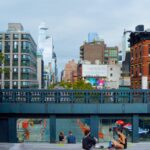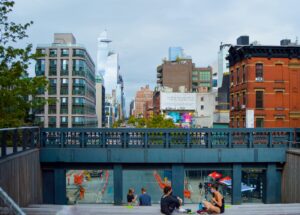The simple activity of taking a walk in the evening can easily turn from a relaxing leisurely activity to a dangerous endeavor by removing just one element from the streetscape: public lighting. While not often recognized as defining aspect of urban environments, artificial illumination has played an essential role in defining the character of modern cities. Crime control, the appeal of nightlife, the rise of the shop window, revolutionary movements, utopias, and ideals of social equity are all concepts whose development is tightly linked to the history of public lighting. Technological advancements over the past centuries have continuously shaped the appearance and symbolism of streetlamps. Still, the this element has remains a constant throughout its history.
Most civilizations understand the night as a realm of mystery, dreams, the hidden, and the occult. During Medieval Europe, cities prepared for nightfall as they prepared for a battle or a storm at sea: city gates were locked, and all residents were to retreat indoors. City-wide decrees, such as the 1380 one in Paris, stipulated that all houses must be locked at night, and the keys must be deposited with the magistrate to ensure added safety. Meanwhile, the night watch, armed with torches and weapons, patrolled the streets. Similar regulations were in effect in Berlin and Vienna until the 19th century, according to Wolfgang Schivelbusch.
The 15th century brings the first attempts in Europe to install public lighting on a large scale. A decree in London required inhabitants to hang lanterns outside their homes as a means of identification. Similarly, in the 16th century, Parisian residents were compelled to hang lanterns beneath their street-facing windows as an extension of an older law that mandated that all residents walking the streets at night must carry torches to make themselves visible. This concept inverts the usual role of windows, using them to bring the light from the private home onto the public street.
Read more on Archdaily
Author: Maria-Cristina Florian
Recommended by Stephanie Cheung











More Stories
A stealthy reimagining of urban public space by Elizabeth Diller
Security by Design: Protection of public spaces from terrorist attacks
10 years of Global Public Space Programme – Annual Report 2022 and reflections on a Decade of Public Space